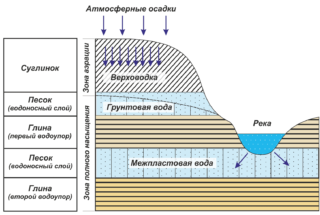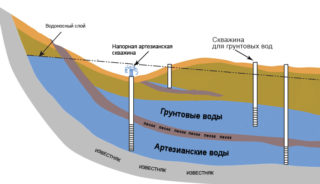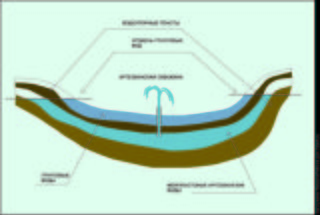More and more city dwellers prefer to spend their weekends away from the noise of the metropolis, in the lap of nature. But, before building a country estate, you should pay attention to the availability and quality of groundwater in the selected area, especially if it cannot be connected to the central water supply.
What is an aquifer
Types of aquifers
Soil water
The layer called "top water" consists of gravel or sand. It is located at a depth of 1 to 4 meters from the surface, but it is not available in all areas. Due to the uneven size and chaotic arrangement of large and small soil particles, water is retained in the resulting pores. It gets there by filtering sediments or water from reservoirs with the upper layers of the soil. There are several disadvantages from the point of view of a person:
- She is fickle. The presence of this layer may depend on location, season, weather, and other external conditions. Accordingly, it cannot be counted on as a permanent source of water.
- Verkhovodka is not suitable for drinking water. Usually water from the upper aquifer is saturated with organic pollution.
- It is not enough even for constant watering.
- The presence of this aquifer is more likely a minus for the site than a plus. Where there is a sand and gravel layer capable of accumulating moisture, it is difficult to lay a strong and durable foundation for a building - it is highly likely that the building will "float" in the coming spring, along with melting snow.
Ground water
Wells built on groundwater allow you to provide:
- Household needs such as washing, watering, car or equipment washing.
- Daily Needs - This water can be drunk and used for washing dishes, but only after thorough filtration and boiling.
Interstratal waters
- Household and industrial needs.
- Recreational purposes (mineral waters).
- Getting electricity (geothermal water).
Interstratal water is a renewable natural resource, therefore, in addition to drilling and equipping, you will also need to settle the issue with a permit for drilling and well registration at your site. Such a well may be needed to obtain drinking water or its own mineral spring.
How to find the aquifer
Traditional methods
The second ancient and intuitive way is to observe natural phenomena: where the water is closer, its evaporation will be higher, which means that the morning summer fog will be thicker than in other places.
The third method is more accurate - it is necessary to put 1-2 liters of absorbent material in the earthenware dish - for example, dried silica gel. The dishes with silica gel should be weighed, then, tightly covered with a cloth, buried in the ground to a depth of two meters. After a few days, the silica gel will absorb some moisture from the soil, and the heavier our pot becomes, the closer it is to the water.
Popular way
To this day, the method of searching for groundwater using "frames" - an aluminum wire bent at a right angle 10 centimeters from the edge, has not lost its popularity. Two 40-centimeter wire cuts are required, they are loosely located in the "handles", the purpose of which is the free movement of the "frames" in the hands.
When looking for water, the frames should be held in front of you at a short distance - so that the ends of the wire look straight ahead. With careful movement along the site, you can notice that in one or several places the frames will begin to move in opposite directions, in order to eventually intersect. The location marked with the "cross" of these frames is most likely more suitable for the location of the well than all the others.
Modern way
Today, trial drilling is used to determine the depth of soil and groundwater. The drill may have a small diameter and appropriate markings. If it is necessary to detect soil water, then a diameter of 10 centimeters is sufficient.To get to the ground water, you need a larger drill - up to 20 centimeters in diameter. Usually for household needs a depth of 4-6 meters is enough, for drinking water - up to 18 meters.
Determining the depth and quality of groundwater can help not only correctly locate a well or a well, but also lay a durable foundation for a country house or estate. Human needs water, but only proper handling is safe.












